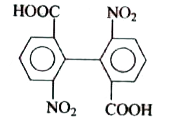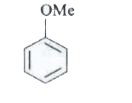A
B
C
D
Text Solution
AI Generated Solution
The correct Answer is:
|
Topper's Solved these Questions
COORDINATION COMPOUNDS
NCERT FINGERTIPS ENGLISH|Exercise HOTS|8 VideosView PlaylistCOORDINATION COMPOUNDS
NCERT FINGERTIPS ENGLISH|Exercise NCERT EXEMPLAR PROBLEMS|14 VideosView PlaylistCHEMISTRY IN EVERYDAY LIFE
NCERT FINGERTIPS ENGLISH|Exercise NCERT Exemplar|15 VideosView PlaylistELECTROCHEMISTRY
NCERT FINGERTIPS ENGLISH|Exercise Assertion And Reason|15 VideosView Playlist
Similar Questions
Explore conceptually related problems
Knowledge Check
A
B
C
D
Submit
A
B
C
D
Submit
A
B
C
D
Submit
Similar Questions
Explore conceptually related problems
NCERT FINGERTIPS ENGLISH-COORDINATION COMPOUNDS -Assertion And Reason
- Which of the following compounds exhibits linkage isomerism?
04:24
|
Playing Now - Assertion : Aqueous solution of the compound CoCl(3) * 4NH(3) when tre...
04:47
|
Play - Assertion : The complex K(3) [Cr(C(2)O(4))(3)] when present in aqueous...
02:08
|
Play - Assertion : N(CH(2)CH(2)NH(2))(3) and EDTA are examples of polydentate...
04:59
|
Play - Assertion : Coordination number of Fe and Co in [Fe(C(2) O(4))(3)]^(3-...
06:32
|
Play - Assertion : [Co(NH(3))(5)Br]SO(4) gives white precipitate with barium ...
02:36
|
Play - Assertion : Tetrahedral complexes having two different types of uniden...
Text Solution
|
Play - Assertion : In a coordination entity [PtCl(2)(en)(2)]^(2+) only the ci...
05:37
|
Play - Assertion : Inner orbital complexes are low spin complexes . Reason...
07:17
|
Play - Assertion : [Fe(H(2)O)(6)]^(2+) is sp^(3) d^(2) hybridised and paramag...
02:56
|
Play - Assertion : In tetrahedral complexes low spin configuration are rarel...
03:16
|
Play - Assertion : [Ti(H(2)O)(6)]Cl(3) on heating becomes colourless . Reas...
02:05
|
Play - Assertion : According to crystal field theory , during complex formati...
01:40
|
Play - [Fe(H2O)6]^(3+) is strongly paramagnetic whereas [Fe(CN)6]^(3-) is wea...
05:59
|
Play - Assertion : K(2)[Ni(EDTA)] is more stable than K(3)[Al(C(2)O(4))(3)]. ...
02:07
|
Play - Assertion : Geometrical isomerism is also called cis-trans isomerism ....
02:41
|
Play






